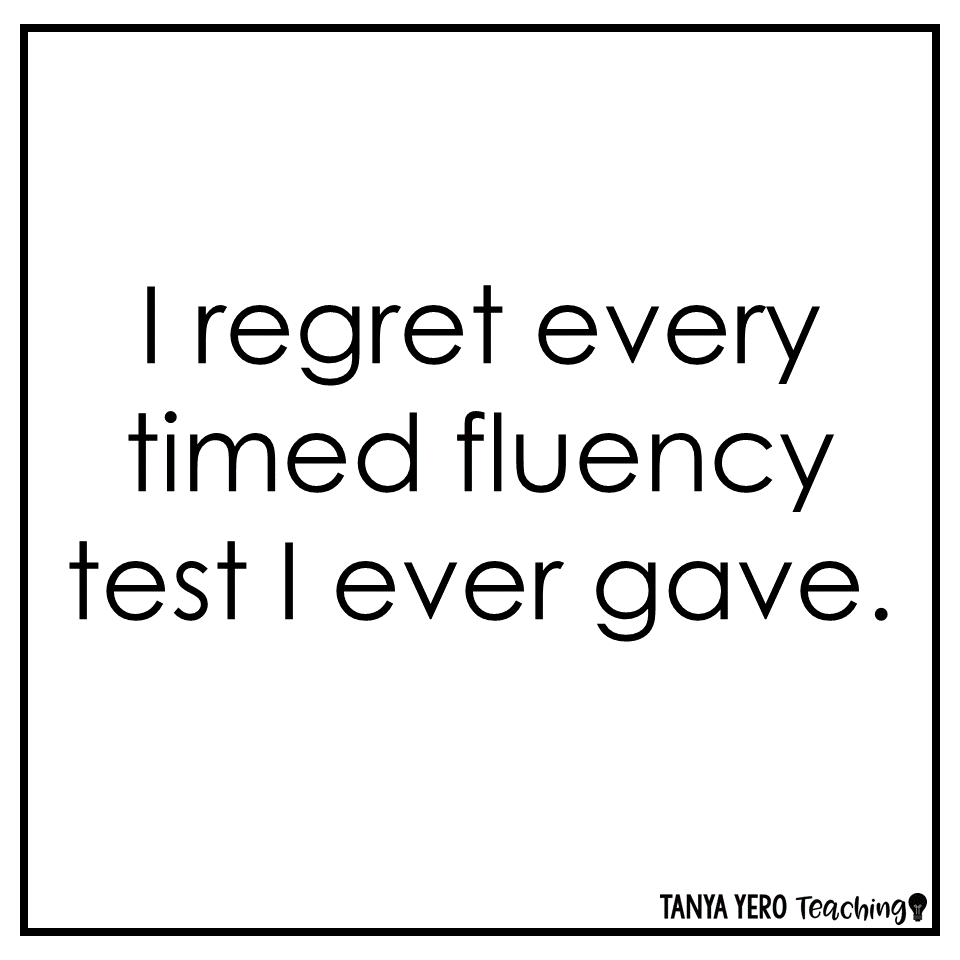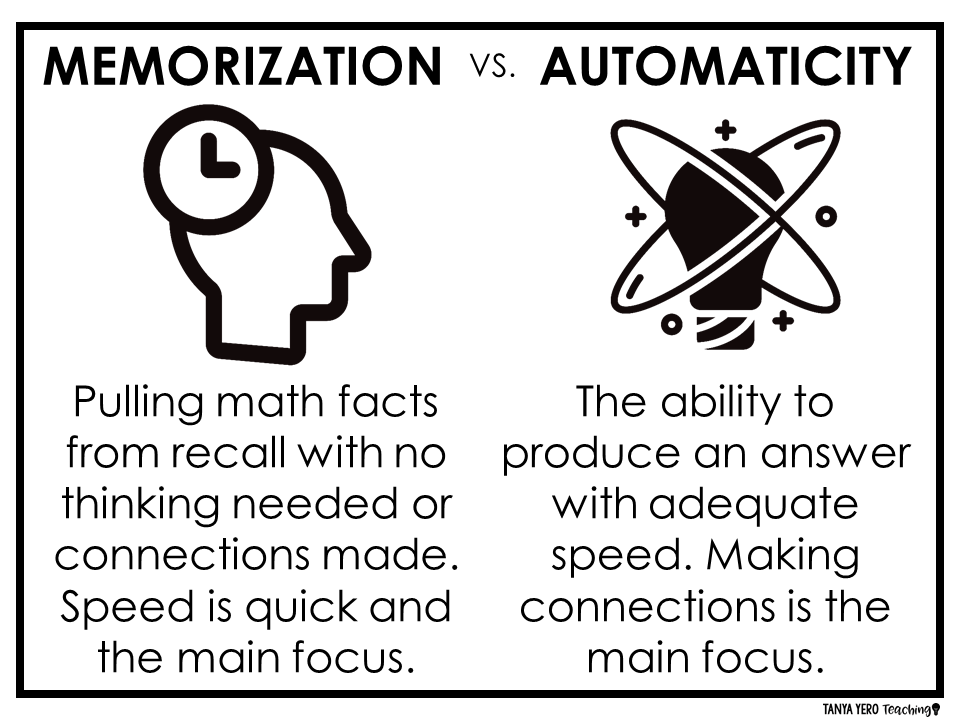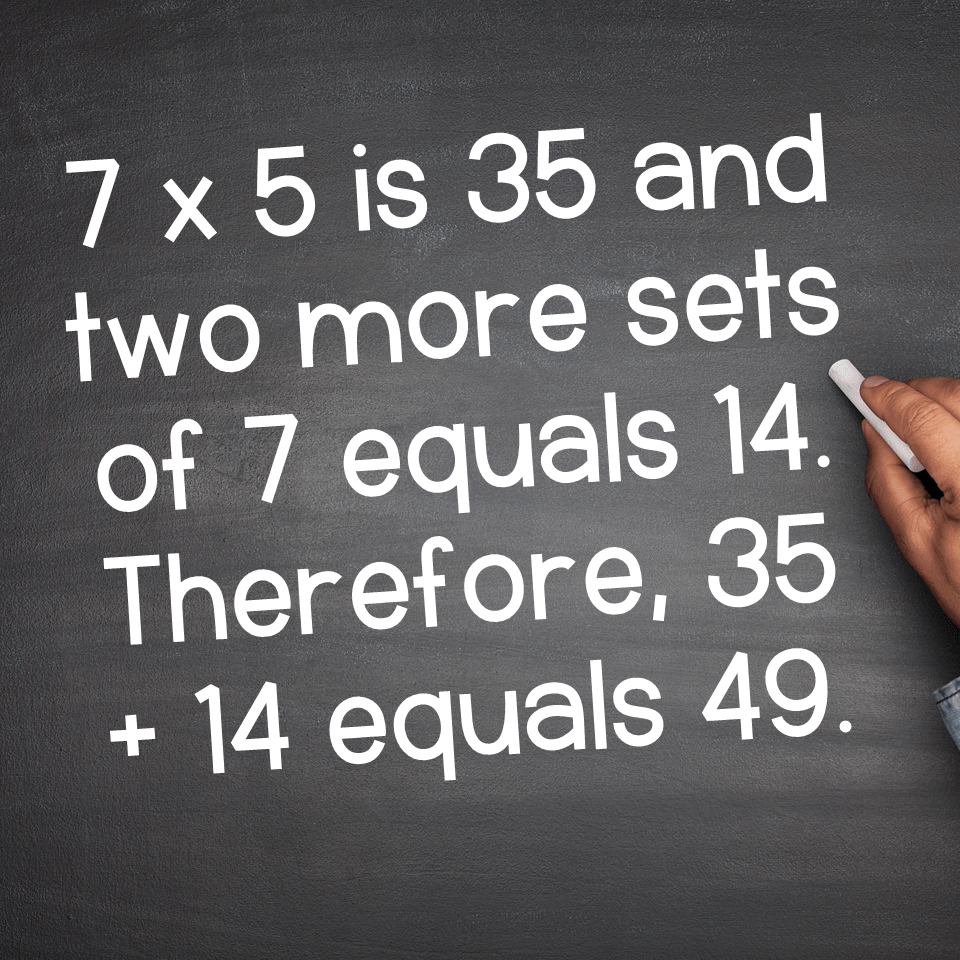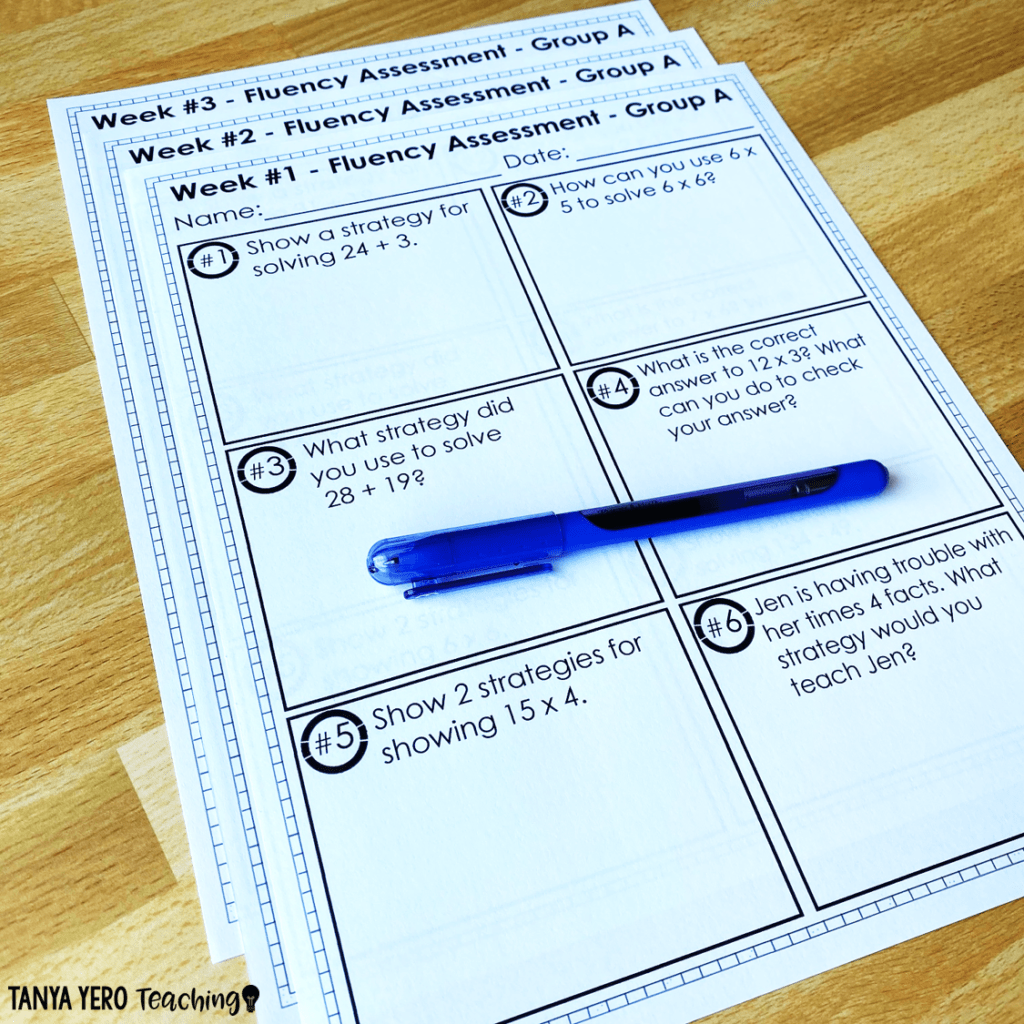Recently, I created a post on Instagram regarding fact fluency and timed tests.

Here is the caption that accompanied the post:
“I used to think that a student’s ability to quickly recall a math fact was important. I regret that decision and every timed test I ever gave my students.
Today I define fluency in three parts: efficiency (quick recall and/or ability to use a strategy), accuracy, and flexibility.
Math celebrates creativity and diversity in solving problems. I now see fact fluency in the same light.”
The post gained comments quickly… with some supporting what I said, and others upset with the post. I received many messages reminding me of the importance of fact fluency. If we don’t assess our students’ fluency then we are failing them. Some commented that they taught middle and high school and that their students didn’t know their facts, thus hindering their work when solving various computation problems.
I agree with all of this. Fact fluency is very important to me, and should be on every teacher’s radar. Just because I don’t administer timed tests doesn’t mean I don’t teach and check for fluency. I simply choose to define and assess it differently.
There are two ways to define fact fluency: memorization vs. automaticity.

What are timed tests really assessing?
The simplest answer is math facts, but with timed tests the child is strictly relying on memorization. Memorization of facts is rote learning; pulling information from memory with speed. There is no time to make deep conenctions. The child is pulling an answer from their mental filing cabinet due to repetition with that particular fact. There were many cases where a child who struggled in my class to conceptually understand math content would then score an A on a timed test because the two tasks required a different level of understanding. Memorization is the most basic level of learning. What’s more important…memorizing the date of the War of 1812 or understanding the causes and effects of that war?
When I administered timed tests, we would collectively grade our assessments afterwards. It would baffle me how many students had to tangibly write out 100 subtracted by however many questions they missed to find their scores. Students that were getting A’s and B’s on a timed test had to then write out 100-12= 88 to calculate their score on an assessment that is evaluating FLUENCY. This proved to me that they were pulling directly from memorization and nothing else.
What’s the alternative then?
I see math fluency the same way I see number sense and teaching standards conceptually; all can be promoted through purposeful questioning. Instead of using memorization I want my students to use automaticity. Automaticity is the ability to produce an answer with adequate speed while still thinking about deep relationships and/or connections. Automaticity doesn’t mean I let my students spend 5 minutes trying to solve 7 x 7, but it can look something like this:

My students see math as a subject that works for them, not the other way around. They are expected to manipulate numbers, make connections, and seek alternative ways of solving. Why not incorporate these ideas into fact fluency? To this day I will still sometimes use a mental strategy for solving 8 x 8 and 9 x 6; these two facts I cannot commit to memory even well into my 30’s. Is this bad? I don’t think so. It just makes me human, just like your students.
Memorization and automaticity sound very similar, and they are, but automaticity promotes number sense. Introduce your students to various strategies that can be used mentally to solve problems.

How I assess fluency:
My students complete fluency assessments that focus on number sense strategies and/or mental math. I also conduct fluency interviews. Fluency interviews are quick four to five minute discussions. They can be made even shorter by simply asking the child one question. You’ll be able to tell if the child doesn’t know the solution at all. You’ll also be able to see if they are pulling the answer from memorization or automaticity.


What happens if I have a child that is relying on memorization?
Nothing! Using memorization for fact fluency isn’t wrong, but math teachers should expose students to number sense and mental strategies. I use number talks in my classroom as daily practice. Students need exposure to mental math. Your students need to see the components of math in the deepest forms as much as possible.
Head here to watch a presentation I did for an upper elementary teacher conference on how to promote number sense in your classroom.
To read more about how I incorporate meaningful fuency into my classroom head to this five part blog series.






